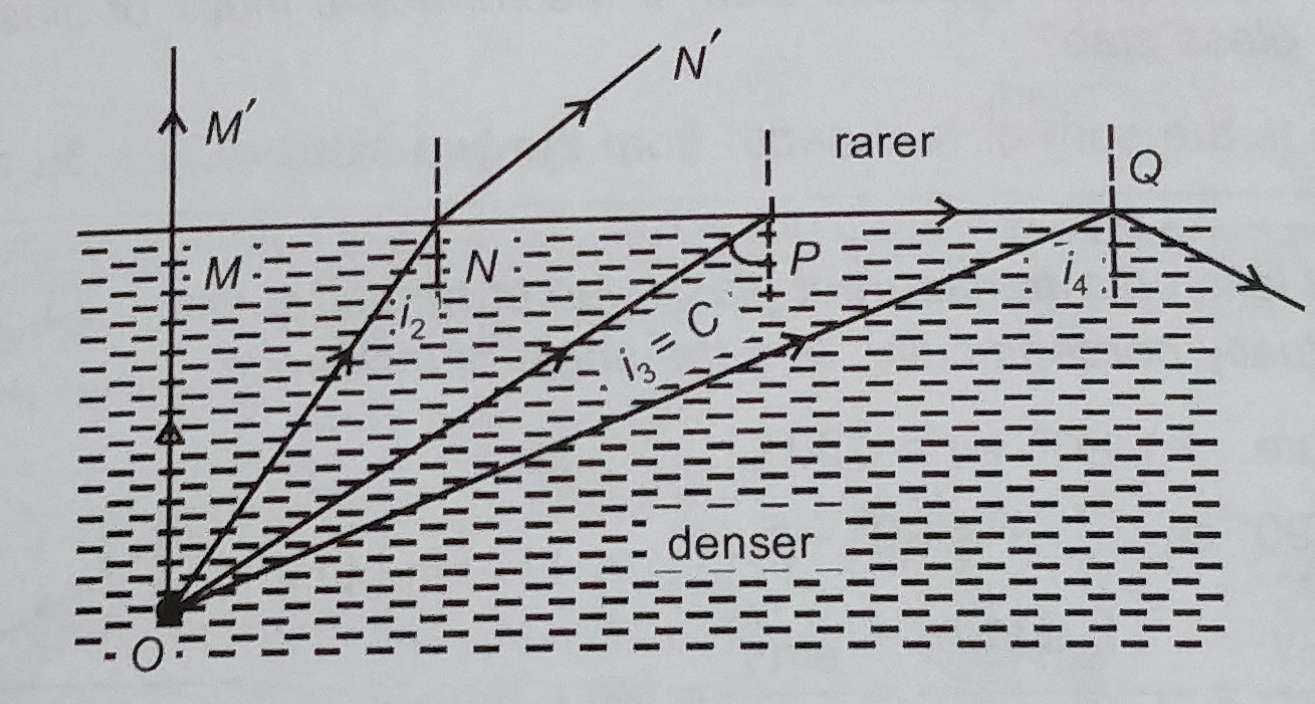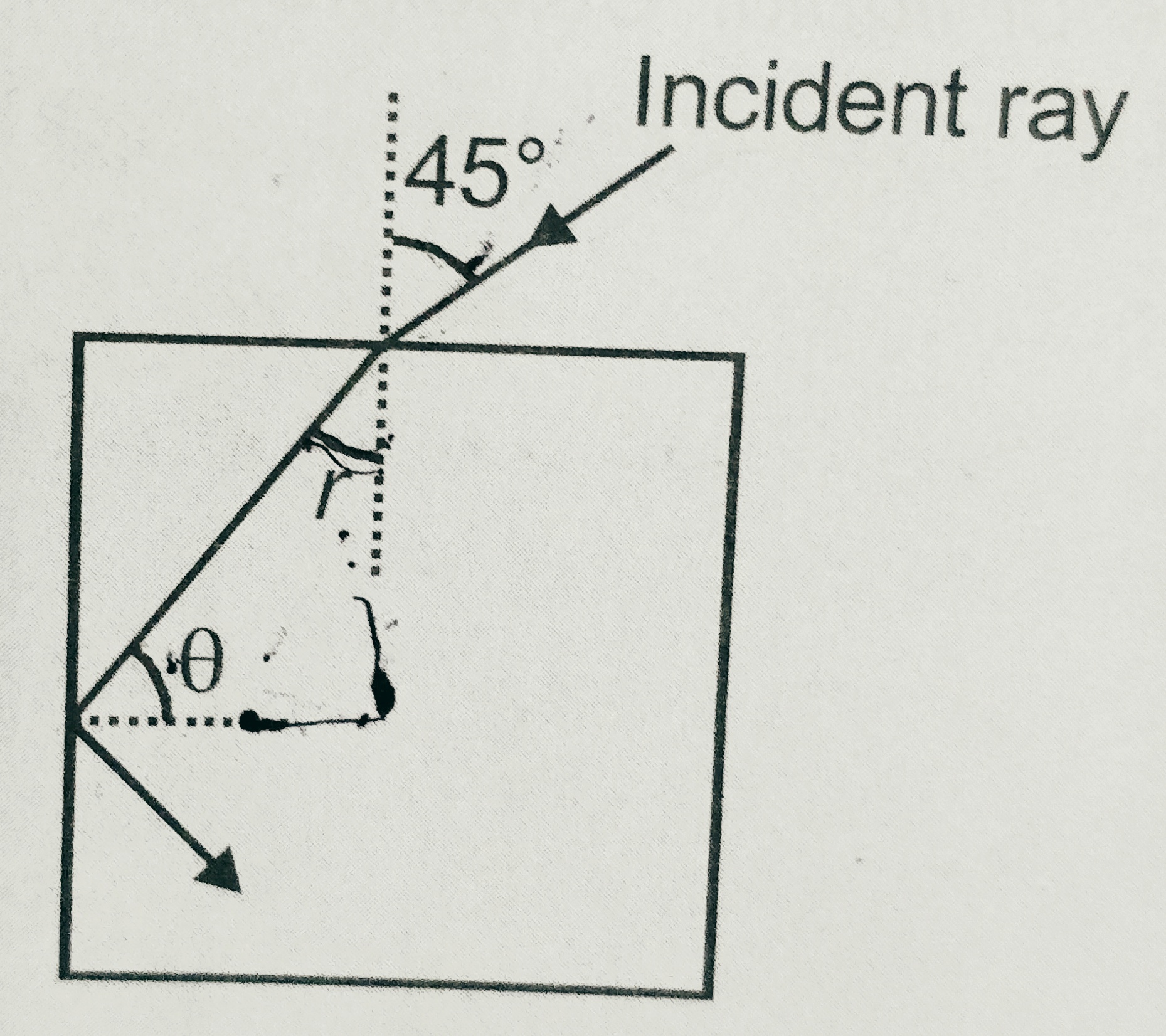In this topic we will discuss , what do you mean by the term Total internal reflection, critical angle . And we will practice some questions based on these topics.
before to know this topic students must know Real depth and apparent depth. To know this topic click here-
Total internal reflection and critical angle.
Before to know about the total internal reflection we must know critical angle
Critical angle – It is the value of angle of incidence for which angle of refraction becomes 900, when light enters from denser to rarer medium .
As we know ,
1µ2 = sin i /sin r
Since light is moving from denser medium to rarer medium
So, 1µ2 = sin r /sin I;
i.e. µ = sin 900 / sin c [ here r= 900 then I is written by C (critical angle).
So, sin C = 1/µ
Then critical angle C = sin -1(1/µ).
Total internal reflection- (TIR) When the light in the denser medium strikes an interface separating the denser medium and a rarer medium at an angle of incidence greater then critical angle total light is reflected without any refraction through the rarer medium . This phenomenon is called “total internal reflection”.

As shown in fig.
I2< C ( critical angle) in this case refraction of light occurs .
I1> C in this condition T.I.R. occurs.
Essential conditions for T.I.R is
(i) Light must move from denser to rarer and (ii) angle of incidence should be greater then critical angle.
Questions based on refraction of light ( apparent depth and real depth, total internal reflection and
Q1. A ray of light is incident on a glass plate as an angle of 600. What would be the refractive index of glass , if reflected and refracted rays are perpendicular to each other? (a)√3 . (b)3/2 (c) √3/2 (d) ½ . ans-a
Q2. A glass of thickness 12mm is placed on a table . The lower surface of the slab has a black spot .At what depth from the upper surface will the sport appear when viewed from above ? (µg=1.50) . (a) 2mm (b) 4mm (c) 6mm (d) 8mm. ans-d
Q3. Light enters at an angle of incidence in a transparent rod of refractive index of the material of the rod the light once entered into it will not leave it through its lateral surface whatsoever be the value of angle of incidence? (a) µ>√2 (b) µ = 1 (c) µ=1.1 (d) µ=1.3. ans-a
Q4. A transparent cube contains a small air bubble . Its apparent distance is 2cm when seen through one face and 5cm when seen through other face . If the refractive index of the of the material of the cube is 1.5 the real length of the edge of the cube must be (a) 7cm (b) 7.5 cm (c) 10.5 cm (d) 14/3 cm. ans-c
Q5. For the given incident ray as shown in figure , The condition of T.I.R of the ray will be satisfied , if the refractive index of the block will be ,

(a) (√3+1)/2 (b)(√2+1)/2 (c)√3/√2 (d)√7/√6. ans-c
Q6. A ray of light travels from optical denser medium to rarer medium. The critical angle for the two media is C . The maximum possible deviation of the ray will be (a)2C (b) π/2 – C (c) π-C (d) π-2C . ans-b
Q7. The apparent depth of water in the cylindrical water tank of diameter 2R cm is reducing at the rate of x cm/min. when water is being drained out at a constant rate . The amount of water drained in cc/minute is : (µ1 refractive index of air and µ2 refractive index of water) (a) xπR2µ1/µ2 (b) xπR2µ2/µ1 (c) 2πRµ1/µ2 (d) xπR2. ans-b
Q8. Refractive index of glass with respect to medium is 4/3 .If the difference between the velocities of light in medium and glass is 6.25 x 107m/sec , then velocity of light in medium is (a)2.5 x 108m/s (b) 0.125 x108m/s (c) 1.5 x 107m/s (d) 3 x 107m/s . ans-a